Third Party Modeling Resources
There are a large number and variety of third party resources available for design visualization modeling. There are libraries of texture maps, background photos, 3D models and procedural tools that produce content automatically. Models are available with animation already setup- such as walking people, and cars that can be configured to run at specific speeds. A few of the vendors are listed here, most sell content in similar formats. 3D models are more available in formats such as .3DS, .VRML or .DXF, but these can be converted and imported into Microstation. Also covered are conversion utilities that allow content to be imported or exported between a variety of CAD and 3D modeling applications.
Image Libraries
Images and "clip-art" are available from a variety of different sources. There are two types of imagery of interest for design visualization. The first is 'cut out' images for placement in a scene, such as people or plants. These are usually provided with an 'alpha' layer, or opacity map channel that allows the image to be rendered in a model with the cut out portions transparent. The images are 'mapped' onto a planar object, and the opacity channel controls what part of the object is visible. The cutout images are also useful for static photosimulations or rendered views, they can be pasted into Photoshop images using transparency controlled by the opacity channel.
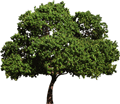
Sample cut-out tree from ImageCELs
Also useful for DV are tileable texture maps for model materials such as asphalt, concrete, etc. Tileable means the image can be repeated across the surface of objects without seeing the seam between the multiple images.
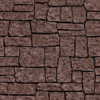
Base Image from ImageCELs
ImageCELs is a vendor that has been around for a long time selling image based content. They have large libraries of high resolution cut-out people, plants, cars, and tileable texture maps
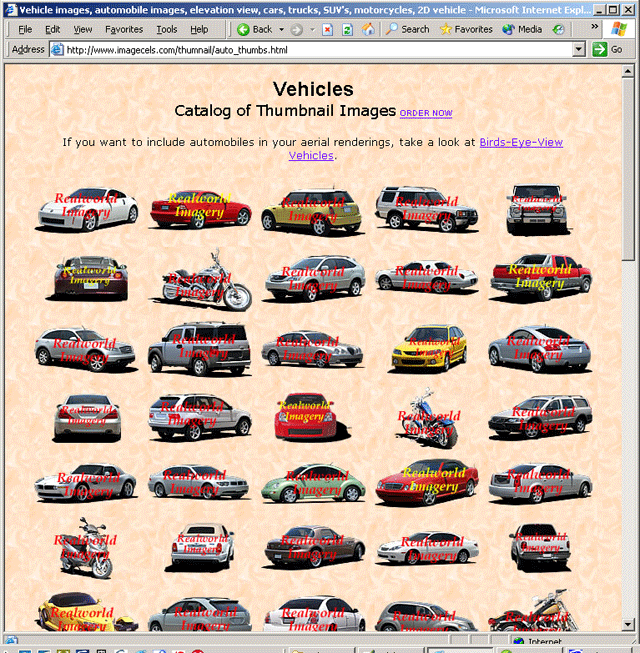
3D Model Libraries
Several companies sell 3D content, there is even quite a bit of free content available from some of the 3D modeling support web sites. Two of the large vendors are Digimation and Turbosquid. These vendors typically provide models in formats such as .3DS or .max, but quite often they are available in .DXF, which can be imported into Microstation. There will, however, be problems with texture maps with DXF files. The best approach will be to use conversion tools discussed later in this section.
Modelvision provides content designed for Microstation, with texture mapping. They sell libraries which include vehicles, people, landscaping, signage and texture maps. The content is inserted into a model as a cell, texture maps can be used to define material patterns.
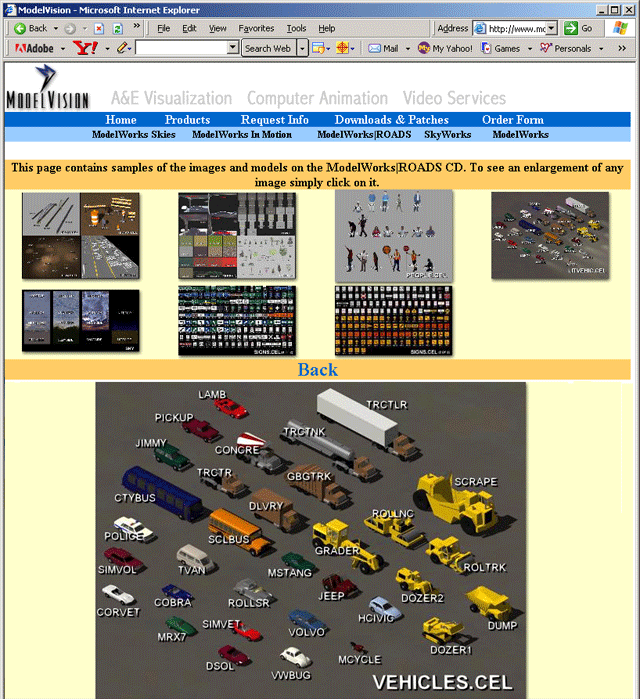
Archvision RPC Tool
The newest release of Microstation with Visualization Enhancements includes a plugin allowing import of Archvision's Real People Content (RPC). This is a library of image based people, landscape materials and vehicles that render correctly from any view direction. The cells include texture maps taken from several angles around the subject, and the plugin selects the correct map based on camera position. A car will look correct from both the front and rear, and with animated scenes, the image will change continuously as the camera moves by the subject. The content is image based, so it renders quickly.
The content is sold in libraries of different specific groups: business people, deciduous trees, SUV's, etc. The plugin accesses the content using it's own path setup, so a library of content can be shared over a network. With the correct version of Microstation the plugin tool is available from the Tools Menu:
TOOLS>VISUALIZATION>RPC
The toolbar has two buttons, Place RPC and Edit RPC, the Place RPC is used to insert content:

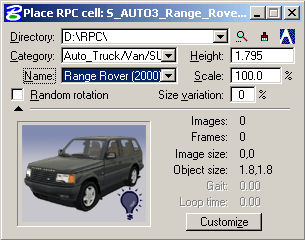
The first time the tool is used, you will need to set a path in the Directory slot. Click the magnifying glass and browse to the folder where the content is stored. RPC content is grouped into categories: car types, plant types, etc. Select a category and a name within that category, and then set the size and scale parameters. The scale should be interpreted correctly by Microstation, but can be changed manually to any percentage of original scale. Groups of objects (trees for instance) can be set to random scale variations.
When inserting content, the first data click inserts the object, the a second click and drag sets the orientation of the object.
Once content is inserted, the Edit RPC button on the toolbar can be used to edit parameters of the object, or to switch out to different content- change the car type, etc.
The following image shows a couple of cars and some trees inserted with the tool into a road design model. The trees can be placed quickly by setting the 'random rotation' option and a 'size variation' percentage in the dialog, then snapping the trees to the ground plane. Each tree will be slightly different in size and orientation.
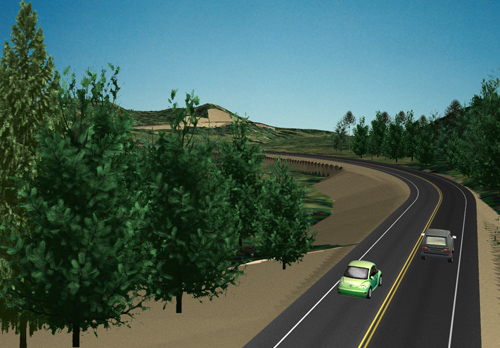
Conversion Utilities
Two of the more established conversion utilities are Polytrans by Okino Graphics and Deep Exploration by Right Hemisphere. Both of these applications work in a similar way. The tool imports models into a proprietary viewing and editing environment, elements of the model can then be exported out to any of a variety of formats. Both applications support texture mapping and animation. Polytrans is also available as a plugin for export/import within some modeling applications. Neither currently supports DGN export directly, files will need to be converted to something like VRML or SAT, then imported into Microstation.
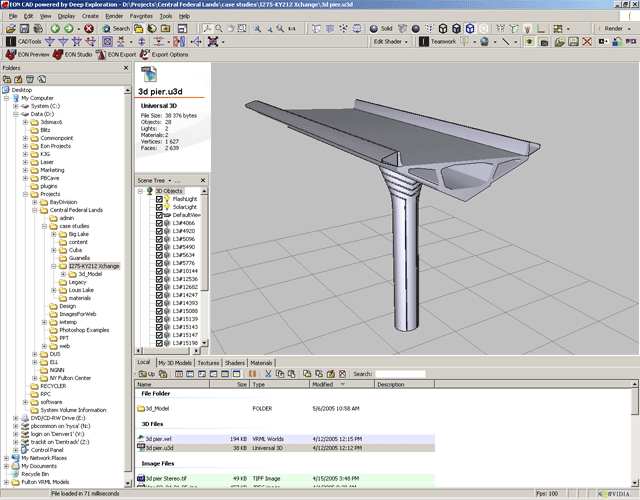
Deep Exploration from Right Hemisphere
